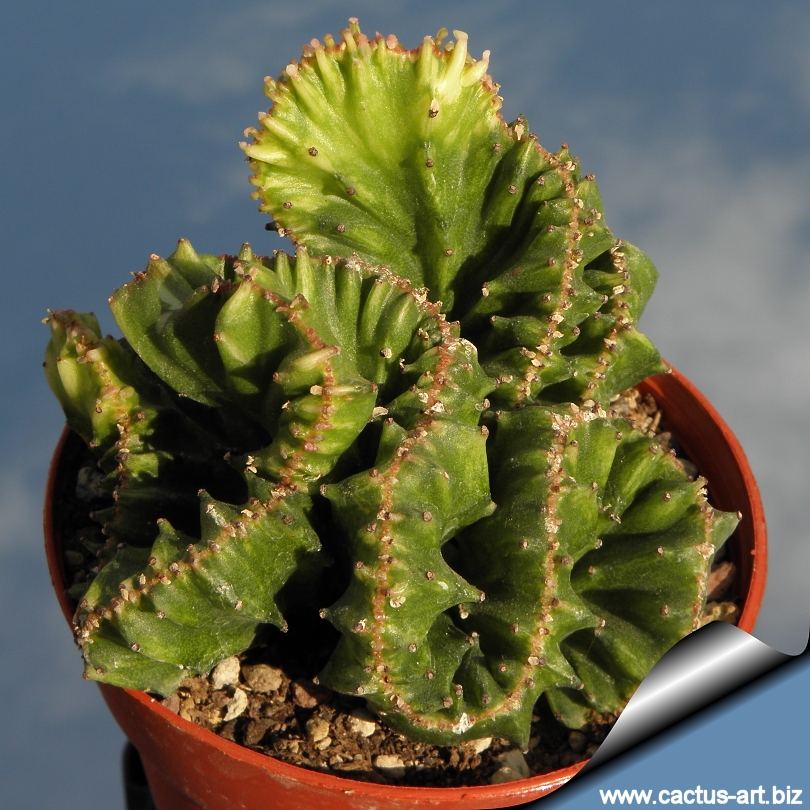
Euphorbia lactea forma variegata cristata
Euphorbia lactea Cristata (Crested euphorbia) - in cockscomb shape can be in variety of colors, pink, red, orange or white. Euphorbia lactea dragon bones - thinner erect cultivar that mostly the color are green with lighter green, gray or white. Euphorbia lactea candelabra - erect in candelabra shape

Euphorbia Lactea Cristata Crested Coral Cactus Live Plant Etsy
Cut an outward curving V-shape in the crest of the Euphorbia lactea and a corresponding V-shape in the rootstock of the Euphorbia neriifolia. Place the two sections firmly together and cover the entire outer area where the plants join with grafting wax. This will help prevent the wounded tissues from drying.
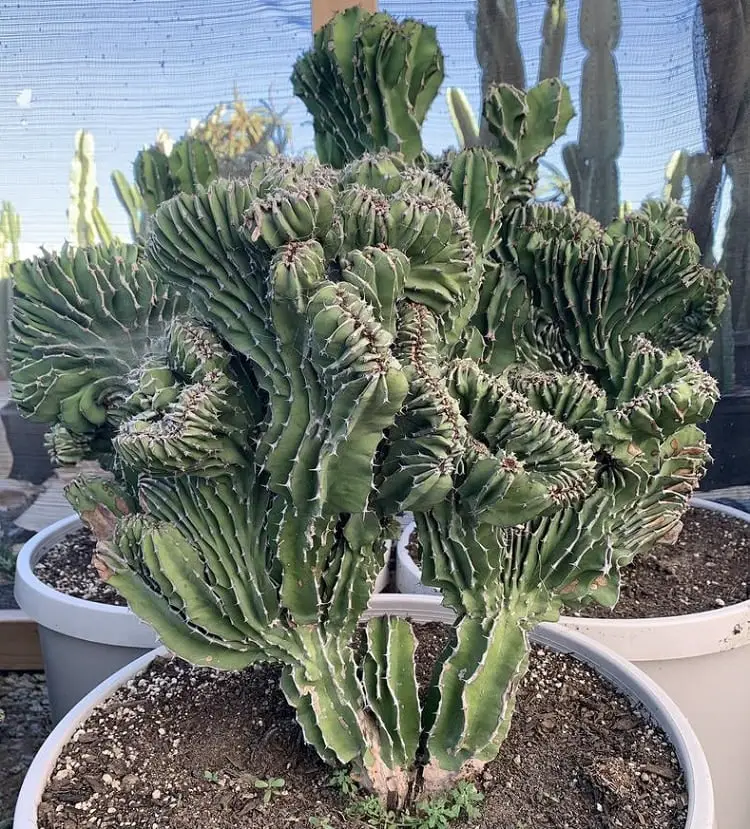
Euphorbia lactea “Cristata” cuidados (Cactus Coral) Jardín de Suculentas
Coral cactus, crested Euphorbia, crested elkhorn, crested candelabra plant, candelabra plant Botanical Name Euphorbia lactea 'Cristata', Euphorbia lactea x neriifolia Family Euphorbiaceae Plant Type Succulent Mature Size 1-2 ft. tall, 8-16 in. wide: Sun Exposure Full, partial Soil Type Sandy, well-drained Soil pH
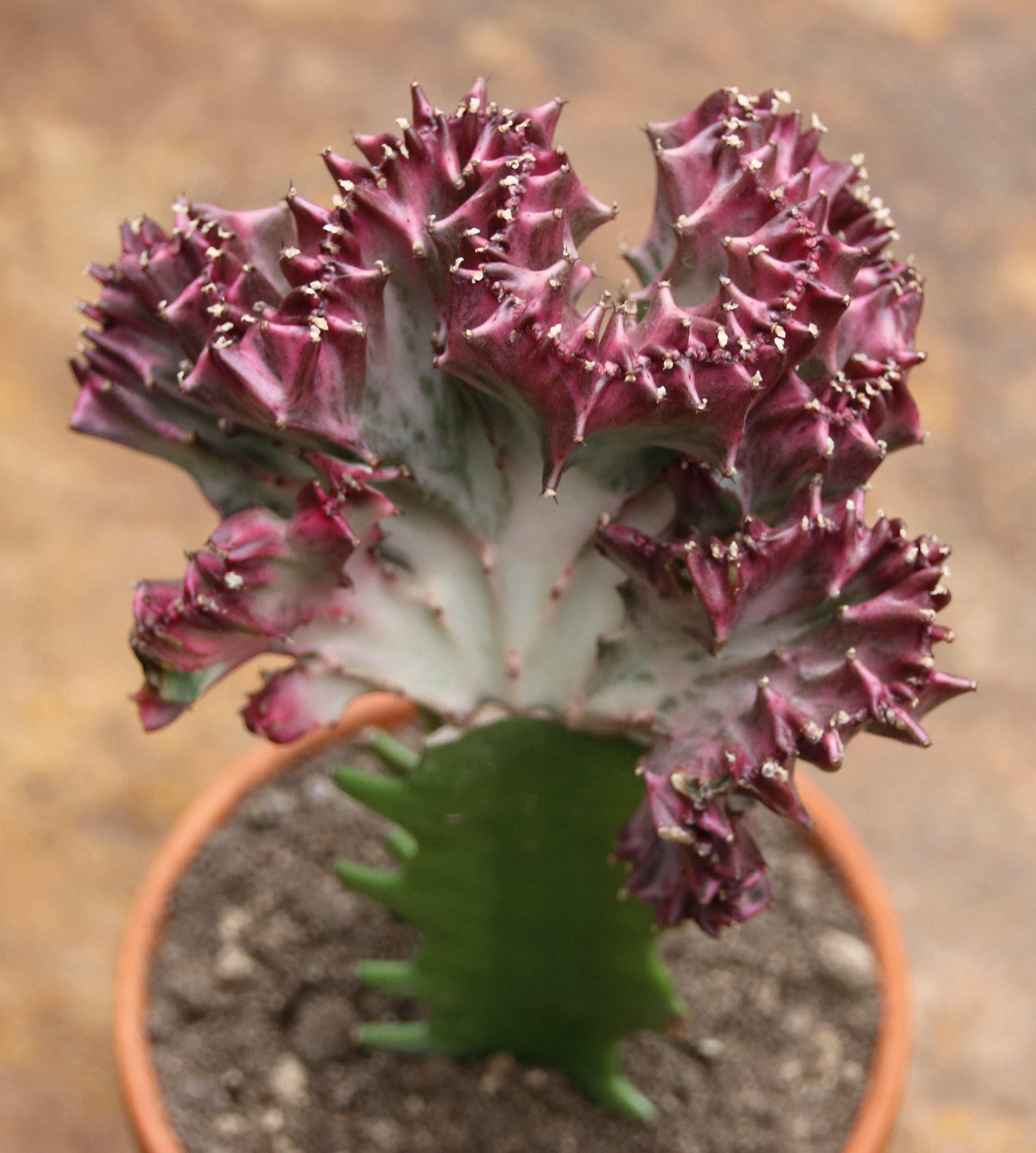
Euphorbia lactea variegata cristata Helmut Matk Kakteenkulturen
Suggested Euphorbia Lactea Uses. The dragon bone plant is a great houseplant. One sport or cultivar is Euphorbia lactea Cristata, aka Coral Cactus, with a crested top that provides an interesting focal point for any house room. Grow the dragon bone tree in a large pot and keep away from pets and children.
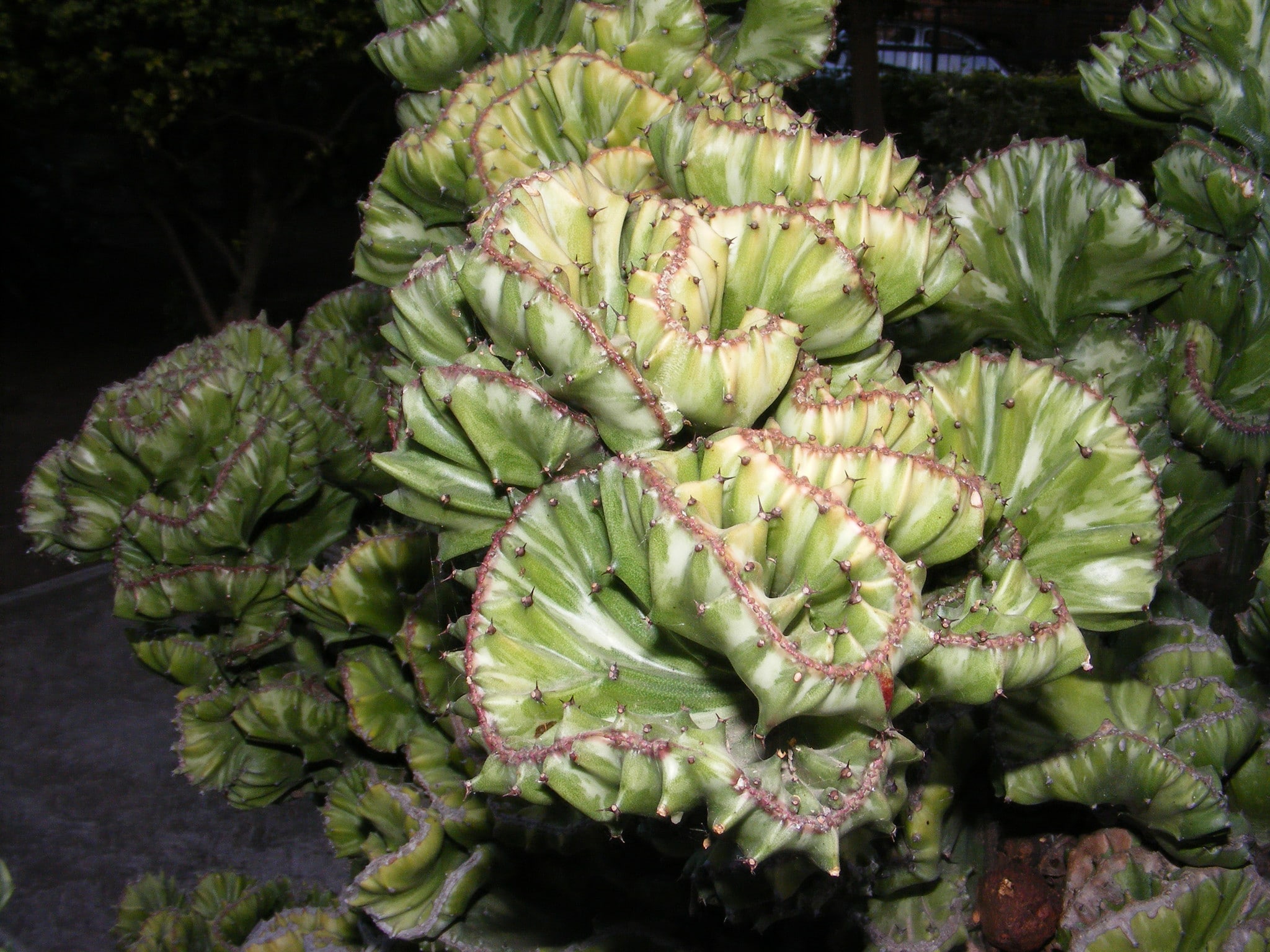
Euphorbia lactea, cuidados de esta preciosa suculenta Jardineria On
Euphorbia lactea Cristata goes by multiple common names such as "Coral Cactus", "Crested Candelabra Plant", "Crested Euphorbia", "Candelabra Plant", and "Crested Elkhorn". Coral Cactus can reach a height of 36-inches (91.44cm) and a width of 24-inches (60.96cm). Cristata belongs to the genus Euphorbia which has its origins.

Euphorbia lactea f. cristata, Coral Cactus in GardenTags plant encyclopedia
Euphorbia lactea cristata, with its unique crested growth pattern, is a captivating addition to any house plant collection. By following the care instructions outlined in this article, you can ensure the healthy growth and longevity of this stunning succulent. Remember to provide well-draining soil, water sparingly, provide adequate light.
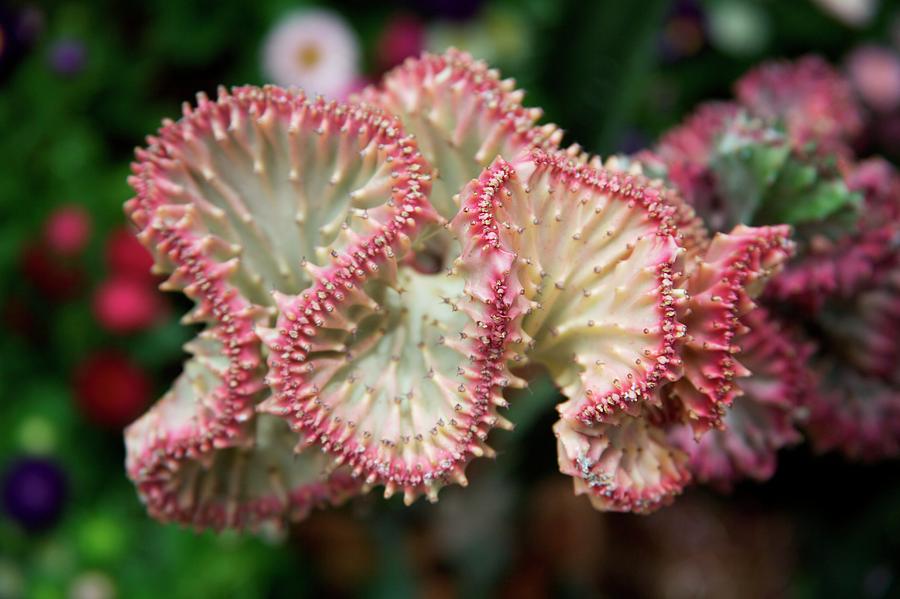
Elkhorn (euphorbia Lactea Cristata) Photograph by Sam K Tran/science Photo Library Pixels
Description: Euphorbia lactea f. cristata or Elkhorn is a crested form with intricately undulating fan-shaped branches forming a snaky ridge or crowded cluster.The more common crested form is dark green attractively marked with silver-grey zigzag patterns. But now this plant is available in a large number of picturesque variegated cultivars ranging in colour from white to, yellow, pink, violet.

Euphorbia Lactea Cristata
Where normal euphorbia lactea tends to be straight-leaved, Cristata is rippled. Source: Jardineiro. Euphorbia lactea Cristata, 'Elkhorn', 'Frilled Fan', 'Crested Euphorbia' This common form changes the shape of Euphorbia lactea drastically. Crested euphorbia lactea has wavy paddles that make it much fuller than the sparse original form.

Euphorbia lactea fa. cristata
Euphorbia lactea 'Cristata' is a unique-looking succulent with fan-shaped branches that grow in an almost undulating pattern. The stem and branches range in color from vibrant green to blue-gray or even silver. When stressed, the edges of the wavy branches can even develop a hue of pink. These wavy succulents are popular among collectors of.
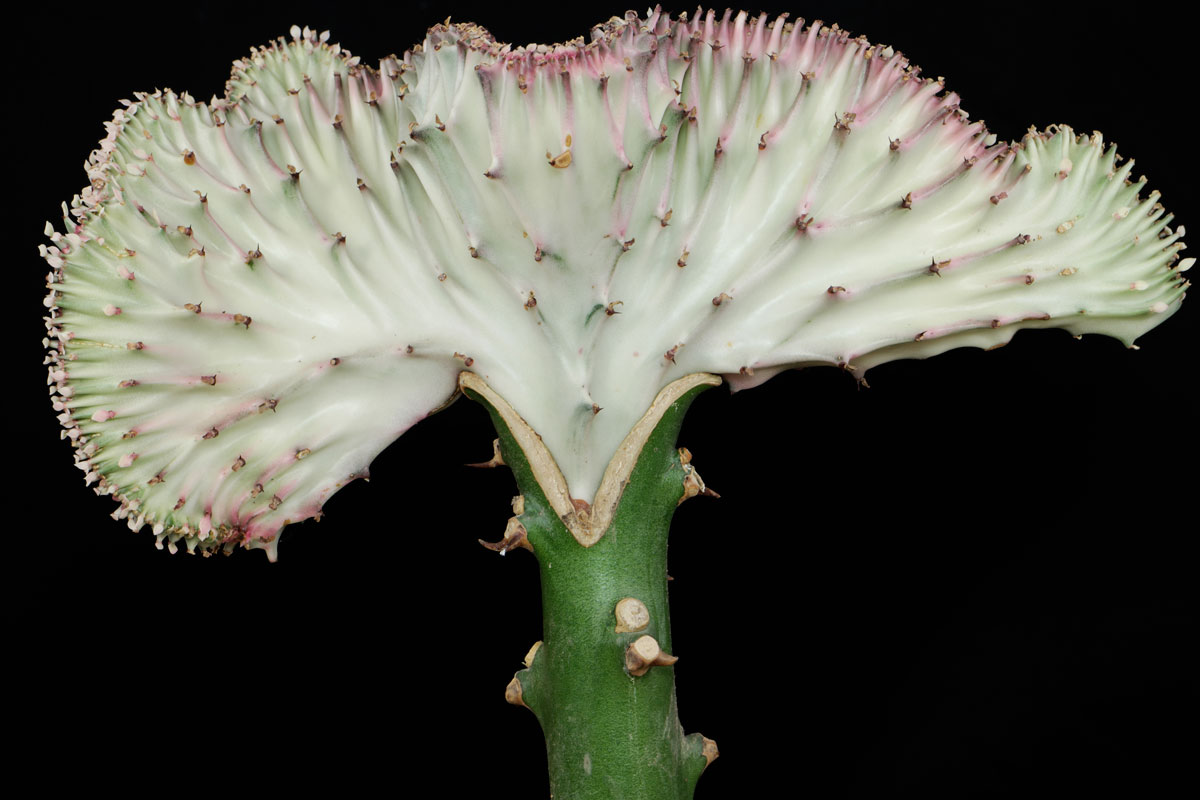
Euphorbia lactea „Cristata“
Euphorbia Lactea 'Cristata F. Variegata' is best known to be a Variegatd form of the cacti. As the plant matures you can expect it to be able to reach up to 90 cm (3ft) tall. As best noticed when looking at the plant you will notice the bright green stem that grows erect until it fans out in a discoloured green fan that can turn pink.
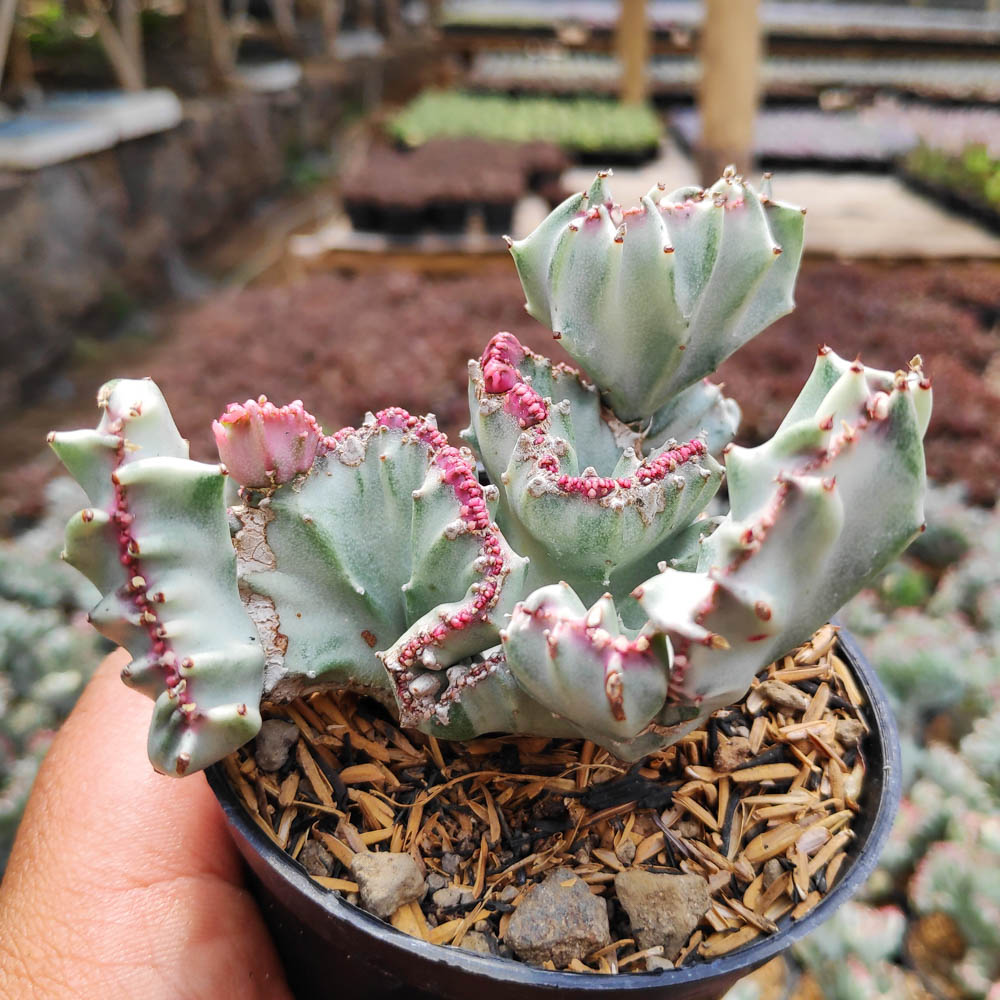
Euphorbia Lactea Cristata
Calling 'Cristata' a cactus is a misnomer, as it is actually two succulents grafted together. The wavy, coral-like top of the fan-shaped succulent is a mutation of Euphorbia lactea, and then grafted onto the root stock of another succulent. "Coral Cactus" ranges in color from blue-grey to silver. The edges of the crests can turn pink.

Euphorbia lactea fa. cristata
Euphorbia lactea 'Cristata'. A compact, evergreen, frost-tender succulent shrub on which the stem's growing point has mutated into a line or crest, so that the plant eventually forms a dome to 90cm (3ft) high and 60cm (2ft) wide of ridged, undulating, reddish-green growth that resembles the appearance of brain coral.

Euphorbia Lactea Cristata
FeaturesWhorls of fleshy, wavy leaves much like underwater coral, make this cactus an eye-catching houseplant. Arrange it with containers of other low care Cacti, in various shapes, for a fun and stress-free display. Avoid contact with sap from this cacti as it is dangerous to the eyes, skin and mucous membranes.UsesMakes a nice windowsill plant. Perfect for all kinds of containers. May be.
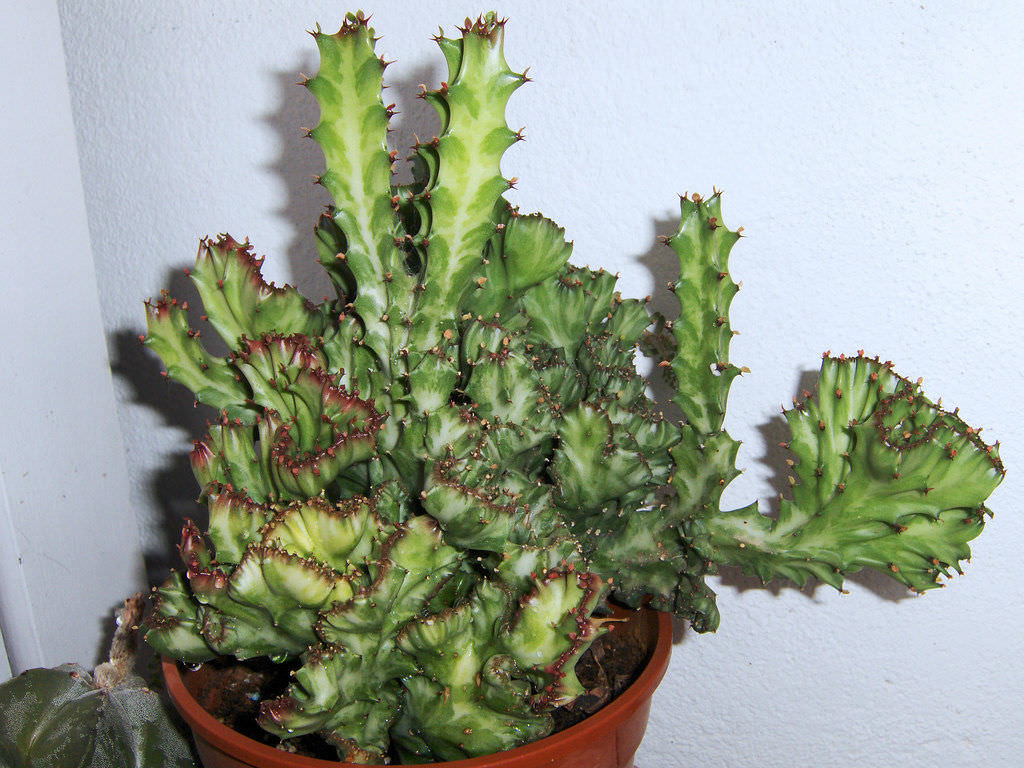
Euphorbia lactea 'Cristata' World of Succulents
Euphorbia Lactea Cristata. The euphorbia lactea cristata is commonly referred to as the crested euphorbia, frilled fan, or elk horn. The common names come from the shape of this variety, which is its main difference when compared to other euphorbia lactea varieties. The branches form in wavy patterns that often grow in an "s" shaped pattern.
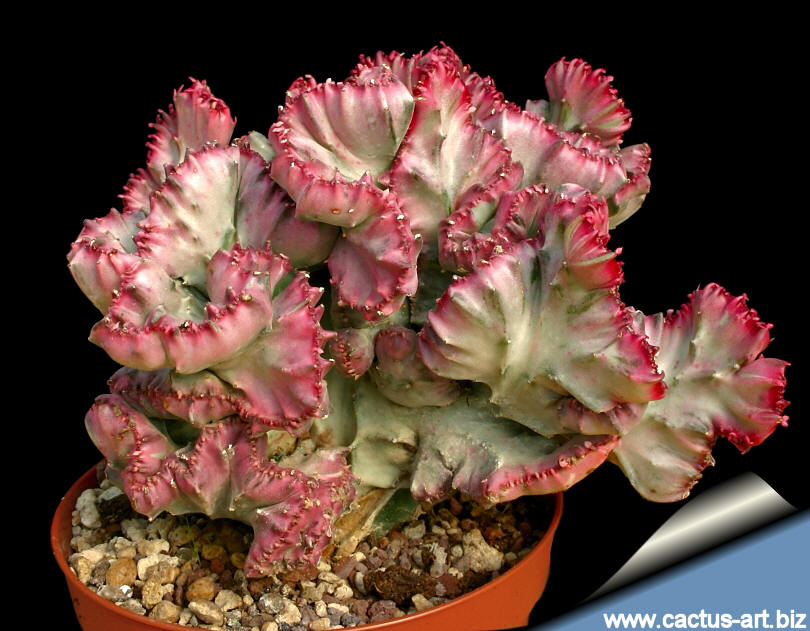
Euphorbia lactea forma variegata cristata
Euphorbia lactea 'Cristata' is a slow-growing succulent composed of fan-shaped branches arranged in an alternating undulating pattern. The branches are green and attractively marked with irregular whitish or lime green markings. This popular crested form of Euphorbia lactea is often grown grafted onto the base of Euphorbia neriifolia.

Euphorbia lactea fa. cristata
60 year old Euphorbia lactea var. Cristata located at the Duke University greenhouse, Durham, USA. It is used medicinally in India. It is widely grown as an ornamental plant, both in the tropics, and as a houseplant in temperate regions; a number of cultivars have been selected for ornamental use, notably 'Cristata' with frilled branching.